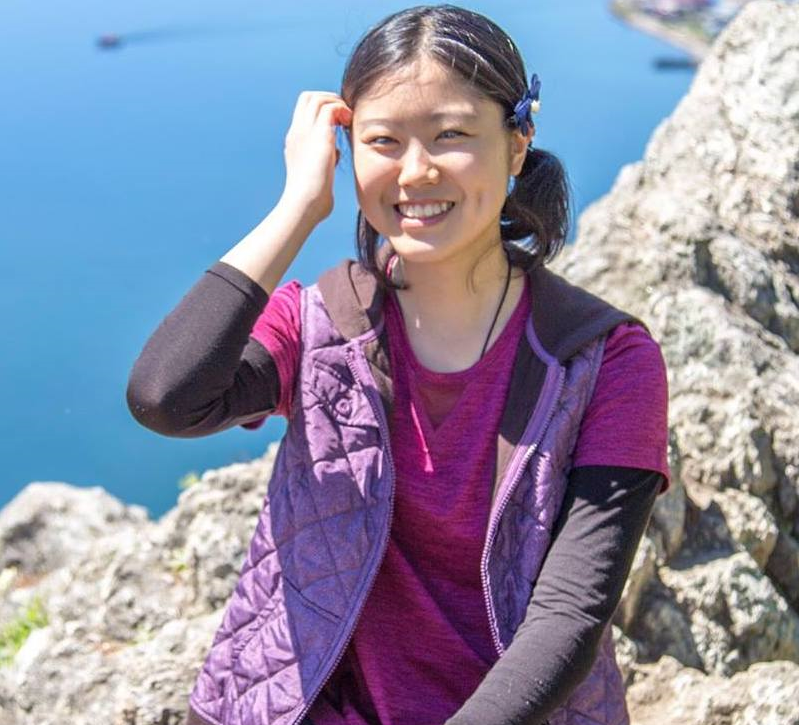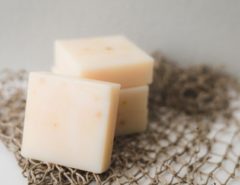By Karin Cho
Welcome back to the second part of “Pursuing a Graduate Degree in Food Science for Non-Food Science Students”. For part one, please go to this post (https://sciencemeetsfood.org/graduate-degree-in-food-science/).
In part two, I’ll be sharing my experience with the graduate application process for food science programs. I didn’t apply to all the food science programs out there, so it would be great if you (the readers or other SMF editors) can comment below on your experience applying for graduate school. Please note that I only applied to universities in the U.S., so there may be a different application process for institutions in Europe, Asia, etc. For specific details on the application process, such as what forms are needed, visa requirements, I recommend checking the program’s website or contacting the department.
If you’ve read part one, I hope you were able to decide what aspect of food science drives your curiosity/motivation to learn, and why graduate school could be a better route than going straight into industry. Having a solid answer to these two questions will help you write your application later down the road. I was in my third year of undergraduate studies when I started considering applying for a graduate food science program. In my cohort, most of my peers were applying for medical school, industry positions, or graduate programs in the natural sciences. To my knowledge, I was the only student applying for a food science graduate program. I therefore needed to do quite a bit of research to understand the application process since there weren’t other students I could discuss with.
I’ve broken down the steps I took to apply for graduate school. I won’t be going into details on the application itself because that is program specific, and instead will go over the general flow of how to find a program and finding potential advisors.
1. Which program(s) do I choose?
Before jumping into this step, it’s helpful to make a list of 10 things that you are looking for in your graduate school experience. The brainstorming process is very similar to how you were deciding which undergraduate institution to go to, except keeping in mind that you may live in that place for 5+ years (for PhDs) instead of 4 years. An alumni from my undergraduate college argued that there is no such thing as work-life balance because both work and personal life are a part of your life—one shouldn’t be sacrificed for the other. Although graduate students have a heavy workload, selecting a place you would be comfortable living in can benefit your overall experience. For example, some things you can consider to help narrow your search:
- What research topic(s) am I interested in?
- What opportunities outside of research would I want to be involved in?
- Between heavy snow and summer heat, which can I tolerate more?
- What facilities do I need easy access to (such as medical needs)?
- How far would I be to family/friends/significant others?
- Do I want to go straight into a PhD or do a MS first? If I enroll as a MS student, can I continue on to a PhD?
- What is the living cost and stipend offered to the average student (This would be irrelevant if you have your own funding)?

Image by Nick from Flickr
It took me weeks to decide which programs to apply to, mainly because there were so many offered in the U.S. People have different approaches to selecting programs, and there isn’t one “correct” way. Some people choose to google search programs, which can offer options outside of the U.S. As I was only interested in programs within the U.S., I went to the IFT website to look for graduate programs. In the students page, there’s a tab for “Graduate Programs”, which takes you to a page listing all the food science programs in the U.S. and Canada. You can also click on each institution to read the details of their program. Sometimes the links are outdated, and in that case, you can search the institution of interest on your favorite search engine.
I say program(s) because I didn’t know many of the universities with food science programs, and wanted the opportunity to get to the ones I was interested in. I have friends who only applied to 1-2 programs in the pure sciences because they (1) had connections or (2) knew exactly which professor they would want to work with. You should not be pressured to apply to more programs, especially because the application fees can add up quickly. My best answer to how many programs to apply to would be a balance of how interested you are in the program and how much you are able to pay for the application fees. Doing your part by researching the program and institution can help you decide whether it is worth paying the fee.
The easiest, and personally least preferred, method of selecting graduate programs is by searching the ranking and applying to the highest ranked institutions. It is the easiest because all you need to do is look up which institutions are ranked 1-10; It is my least favorite method because it assumes that the criteria used to rank the institutions match your needs for graduate school and often overlooks the current research taking place in the department. Most of the learning in graduate school takes place in your research, and hopefully you want to do research on something that interests you. A common concern I’ve read in forums is whether a higher ranked institution increases your chances of employment after graduating. Food science is fortunately a niche field, and from what I’ve heard, food companies tend to hire graduates from institutions they have previously hired from, especially if the alumni have benefited the company. Since I haven’t been involved much with industry, it would be great if more experienced readers can comment on their opinions regarding employment rate and university rankings.
My advice is to take your time and read through what each program of interest has to offer, and whether what they offer is what you want. If you want details about where alumni go, you can usually email the graduate office for details on which companies hired past students in your program of interest.
2. Who will be my research advisor?
In short, this depends on who has the lab space and funding available. If you are the lucky few who have external funding, such as from a company or the government, finding a research advisor is fairly easy. Students who don’t have their own funding will have to work a bit harder to earn the seat. I didn’t have my own funding, so I had to find an advisor who was willing to accept a new student and have funds available to pay my stipend.
Most university websites don’t list which faculty are accepting new students because faculty also don’t know their funding situation for the following year. On the faculty page, their research interests are usually listed, and sometimes a link to their lab website is also available. In the case that there are no details about the professor’s current research, you can find their recent publications on google scholar and read some of the abstracts to have an idea of what kind of research they are interested in. If the article has been published within the last year or two, that’s likely a good reflection of what current projects the lab is working on. For example, if you are interested in research on proteins, then finding a professor who has published several works related to protein functionality, application of novel protein sources, etc, would likely match your research interests. Of course, research can take unexpected turns, but most professors focus within a particular field in food science, so the lab’s research projects tend to fall within that field.
Image by Jurgen Appelo from Flickr
Another way to learn about the current research in the lab is to ask the students. If a lab website is available, you can find a list of the current students working in the lab and see if their contact information is written. If not, you could try finding them on linkedIn and contacting them through messages. The linkedIn feature to contact new users may be limited to premium members. If there’s a free trial period available, take advantage of that to send messages to current students. I believe that the students I contacted gave their most honest opinions about their experience, and it was important for me when making my final decisions for graduate school. Knowing some names in advance can make the visit week a bit more comfortable since you will know some faces.
Last but not least, contact the professor directly! Send the professor a polite, professional email that you are interested in their research and would like to know if they will be accepting new students. Here’s a post that describes how you should format your email. My key points are:
- Use an appropriate subject line, such as “Prospective Graduate Student for XXX in 2021”
- Remember formalities, refer to the professor with their proper title (Usually “Dr.”)
- Introduce yourself briefly (who you are, your educational background/current career position, why you are writing the email)
- 2-3 sentences about why you want to work in their lab; you could tie in what you read from their recent publications that interested you
- 2-3 sentences about your relevant experiences –what makes you a good fit for this lab? If you have past research experience or industry experience, try tying that in.
- Attach your CV
- Write succinctly, keep emails within 3 paragraphs
- End your email by thanking them for their time to read through and considering your interest
- Make emails unique—avoid copying and pasting to all potential advisors
I really want to emphasize that last point about copying and pasting. If you copy and paste the same email to all the professors in the food science department of a university, professors will know the email isn’t sincere, and they will think that you are just interested in any open position. Professors talk to each other, especially if they are in the same department! It will appear as though you didn’t put in the effort to do your part of the research, so why should they spend time to consider you?
Some questions I’ve been asked from underclassmen:
Q: How do I know if I don’t sound “pushy” or “demanding”?
A: If you aren’t sure whether your email sounds right, ask a friend or a professor you have good relations with to proof-read your email. They’ll give you feedback on what needs to be changed. Sometimes saving your email as a draft and reading it the next day can give you a different feel for what you’ve written.
Q: What if I don’t hear back from the professor?
A: Professors are very busy people, and sometimes they forget to reply. After 2 weeks of sending your email, if there is no response, kindly send a follow up with your first email copied so they can easily find it. After this follow up email, if there is still no response, I would move on and respond to other professors who have shown interest. Not all professors will be interested in you, but don’t let that discourage you.
Q: Can I contact more than one professor?
A: Yes, and you are encouraged to do so because your most preferred professor may not have the funds to take you. Don’t put all your eggs in one basket.
Q: What if the professor emails back that they can’t take me?
A: I think it’s good that you tried and reached out. The professor may have stated exceptions in their response, like “I can take you if you have your own funding”. In that case, you could try to find external funding. Since most food science related funding requires some degree related to food science, a more feasible route would be to find other advisors to contact.
Q: Do I have to contact a professor? Can I just send the application form and be done with?
A: This depends on your program. For example, UC Davis offers new graduate students to do rotations (explore different labs) so they don’t ask prospective students to contact faculty. On the other hand, Purdue University requires students to contact the faculty before applying and secure a lab to be fully admitted. How do you know whether the program requires this? Look at the graduate program webpage. UIUC’s Food Science Graduate Program page has a section titled “Choosing a faculty advisor” which states, “Graduate student applicants must have a faculty member willing to train them and serve as their major professor before they can be accepted into the Department.” This means you need to contact the professor.
This was a particularly long post, and I hope you found the information useful for finding graduate programs that fit your goals. Feel free to leave comments below if you have any questions or if you have any tips for prospective graduate students!
 Karin Cho | Linkedin
Karin Cho | Linkedin
SMF Blog Writer
Karin earned her B.A. in Biochemistry from Grinnell College, and during her time there, she was unsure how to merge her two passions for science and food. After attending several IFT events and completing a QA internship abroad, she decided to pursue a Master’s in Food Science and Technology from Iowa State University. Her research involves the development of fat alternatives. Growing up in a Chinese-Japanese household, she developed a palate for tasting new, sometimes bizarre, foods. When she’s not learning about food science, she enjoys watching science fiction movies, taking walks in parks, and learning new recipes from the people she meets during her travels.






Leave a Reply